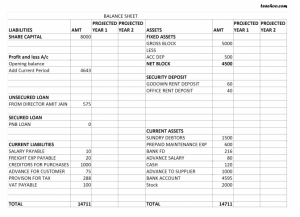
Next, select the payments to include in the deposit from the 1 period non-manufacturing costs are classified into two categories undeposited funds list. If your bank records a single payment as its own deposit, you don’t need to combine it with others in QuickBooks. Instead, you can put the payment directly into an account and skip Undeposited Funds. Now you can select an Undeposited Funds or another account each time you create a sales receipt. By default, QuickBooks puts sales receipt payments into the Undeposited Funds account.
Undeposited Funds is a default account in QuickBooks that holds funds from payments to your company until you deposit them to your bank account. You can’t deposit funds directly to Undeposited Funds, because it’s only a temporary account; you can deposit the funds in a single transaction after you take your deposits to your bank account. The advantage to a lump sum payment is that your transactions are still itemized in the account register, but you only have to check the lump sum deposits when reconciling transactions with your bank statements. This feature ensures that funds are not prematurely recorded as income, providing a more precise representation of the company’s financial status. By centralizing incoming payments, it streamlines the reconciliation process, simplifying the identification of discrepancies and minimizing errors. It allows for better tracking of funds coming in and going out, which is crucial for maintaining a healthy cash flow and making informed financial decisions.
How to Clean Up Undeposited Funds in QuickBooks Online

Recording undeposited funds appropriately is crucial for maintaining transparency and accuracy in financial reporting. By managing undeposited funds effectively, businesses can gain a clear picture of their cash flow, reduce errors, and maintain a precise record of their financial activities in QuickBooks Online. Once set up, any payments received can be deposited into this what is depreciation account, keeping the actual bank deposit separate until the funds are combined in reality.
- Recording undeposited funds appropriately is crucial for maintaining transparency and accuracy in financial reporting.
- It allows for better tracking of funds coming in and going out, which is crucial for maintaining a healthy cash flow and making informed financial decisions.
- Record the payment received from your customer and place it into the Undeposited Funds account.
Step 2: Create a Bank Deposit
Therefore, it is crucial to understand the impact of these mistakes and implement corrective measures to maintain the integrity of financial operations in Quickbooks Online. Next, select the account to which the funds will be deposited and add the payments to the deposit. Make sure to verify the details and allocate the funds to the appropriate income or expense accounts. If you have checks to deposit that didn’t come through the normal invoicing and sales receipt process, you can add those checks in the Add funds to deposit section.
How To Manage QuickBooks Online Bank Feeds
By regularly reviewing and reconciling undeposited funds, businesses can identify any discrepancies or errors, ensuring the integrity of their financial data. Proper categorization of funds also helps in generating accurate financial reports, which are essential for making informed business decisions. Timely deposits further contribute to maintaining the accuracy and reliability of financial information within Quickbooks, allowing for a clear and transparent view of the company’s financial health.
It is crucial to maintain a clear trail of documentation to support the deletion, such as notes detailing the reason for the adjustment and any approvals required. Transparency is key, and any changes made should be well-documented and easily traceable. Deleting undeposited funds in QuickBooks requires careful consideration and accurate adjustments to ensure that all financial records remain consistent and transparent.
It’s imperative to verify that all payments received are accurately reflected in the system and properly reconciled with corresponding bank deposits. By regularly clearing out undeposited funds, businesses can maintain a clear and reliable trail of their financial transactions, promoting financial accuracy and transparency. This step is essential as it ensures that all incoming funds are accurately tracked and recorded before being deposited into the bank account.
How To Use the QuickBooks Online Undeposited Funds Account
It’s good to periodically check your Undeposited Funds account and clear out any payments waiting to be moved. Maintaining good record-keeping practices and conducting regular audits can help in preventing and addressing duplicate passive v non passive income transactions effectively. You just learned how to use the Undeposited Funds account in QuickBooks Online, its importance, and when to use it. If you want other free resources to learn how to better use QuickBooks for your business, check out our free QuickBooks Online tutorials.
To start the process, navigate to the ‘Plus’ icon on the Quickbooks Online dashboard and select ‘Bank Deposit’.
We will explore the key differences between QuickBooks Online and Desktop, providing you with a thorough understanding of each platform’s unique features and functionalities. Choose your customer from the drop-down menu and their open invoice will automatically show up on the list. Reconciliation is done when you move undeposited funds in QuickBooks to your actual bank account. The Undeposited Funds account in QuickBooks Online is a holding account where you temporarily record customer payments before grouping and depositing them as a lump sum into your bank account. You must use the Undeposited Funds account only for payments that are physically collected, including cash and paper checks.